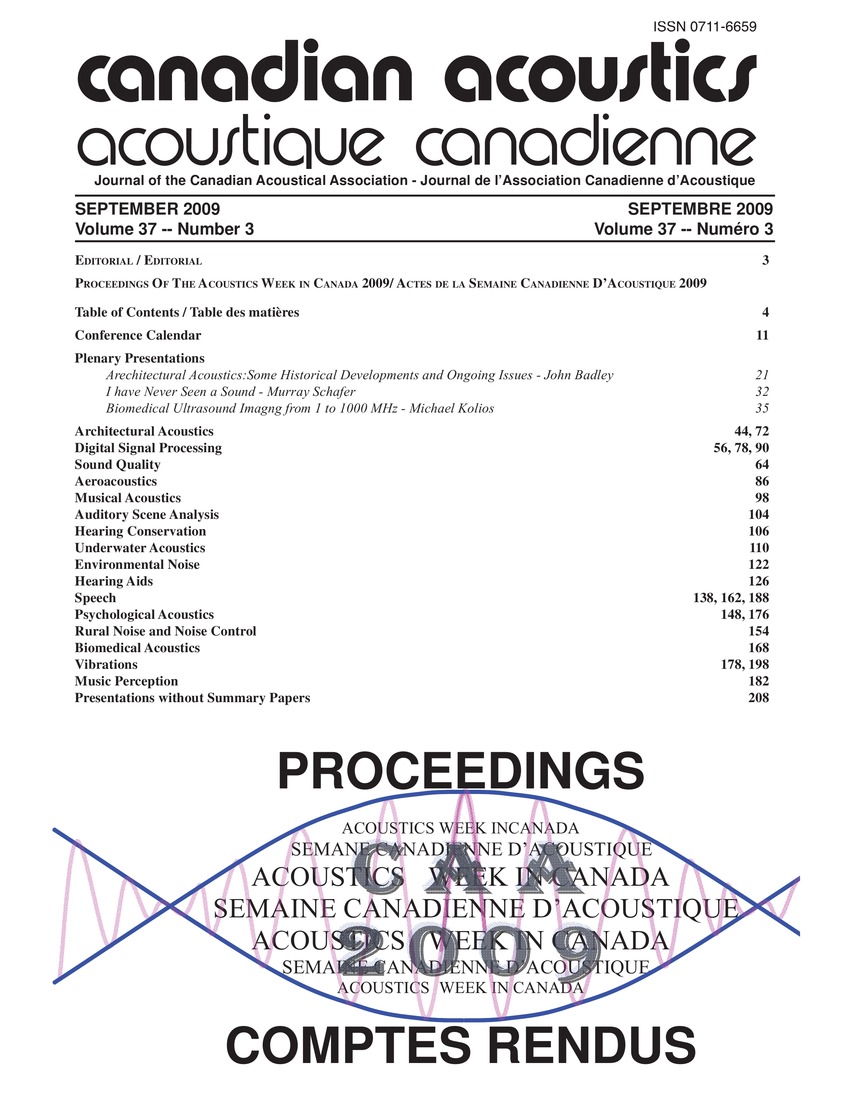Region-growing permutation alignment approach in frequency-domain convolutive blind source separation
Keywords:
Alignment, Apartment houses, Bins, Frequency bands, Frequency domain analysis, Separation, Signal analysis, Alignment methods, Convolutive blind source separation, Frequency bins, Frequency dependence, Frequency domains, Region growing, Separation problems, Short time Fourier transforms, Signal power, Small region, Two-componentAbstract
A new alignment method was proposed to solve the problem in frequency-domain blind source separation (BSS). The new alignment method was based on an inter-frequency dependence measure involving the powers of separated signals. Bin-wise permutation alignment was applied across all frequency bins using the correlation of separated signal powers and the full frequency band was partitioned into small regions. These small regions were based on the bin-wise permutation alignment result and region-wise permutation alignment was performed in a region-growing manner. It was demonstrated that the convolutive separation problem was converted to instantaneous separation in each frequency bin through short-time Fourier transform (STFT). It was also observed that the correlation of bin-wise signal power ratio tended to be high when the two components belonged to the same source.Additional Files
Published
How to Cite
Issue
Section
License
Author Licensing Addendum
This Licensing Addendum ("Addendum") is entered into between the undersigned Author(s) and Canadian Acoustics journal published by the Canadian Acoustical Association (hereinafter referred to as the "Publisher"). The Author(s) and the Publisher agree as follows:
-
Retained Rights: The Author(s) retain(s) the following rights:
- The right to reproduce, distribute, and publicly display the Work on the Author's personal website or the website of the Author's institution.
- The right to use the Work in the Author's teaching activities and presentations.
- The right to include the Work in a compilation for the Author's personal use, not for sale.
-
Grant of License: The Author(s) grant(s) to the Publisher a worldwide exclusive license to publish, reproduce, distribute, and display the Work in Canadian Acoustics and any other formats and media deemed appropriate by the Publisher.
-
Attribution: The Publisher agrees to include proper attribution to the Author(s) in all publications and reproductions of the Work.
-
No Conflict: This Addendum is intended to be in harmony with, and not in conflict with, the terms and conditions of the original agreement entered into between the Author(s) and the Publisher.
-
Copyright Clause: Copyright on articles is held by the Author(s). The corresponding Author has the right to grant on behalf of all Authors and does grant on behalf of all Authors, a worldwide exclusive license to the Publisher and its licensees in perpetuity, in all forms, formats, and media (whether known now or created in the future), including but not limited to the rights to publish, reproduce, distribute, display, store, translate, create adaptations, reprints, include within collections, and create summaries, extracts, and/or abstracts of the Contribution.


